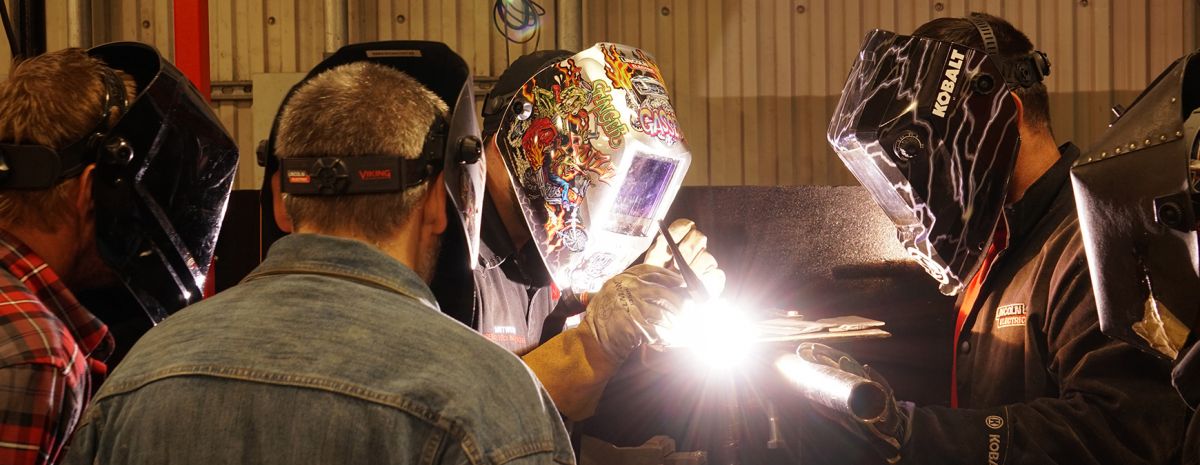TWS is a Great Training Option for Everyone
Learn more about how we can prepare you to advance your career.
Whether you’re a beginner welder or a seasoned professional, mastering tack welding is a universal skill that helps create strong, reliable joints.
What Is Tack Welding?
Tack welding is a type of weld that temporarily holds pieces of metal in place before you complete a full weld. These small welds, called “tacks,” serve as anchors that help you keep your metal aligned before the welding process is completed. Tack welds are short, typically no more than an inch long. The characteristics of tack welds is as follows:
- They are Temporary – Tack welds are removed or incorporated into the final weld.
- They are Small and Precise – They require less heat and material than full welds.
- It’s a Quick Application – They are fast and help you prepare for the welding process.
Properly placed tack welds help reduce distortion, maintain alignment, and prevent movement during final welding
What Are the Uses for Tack Welding?
Tack welding ensures that components remain aligned during the welding process. This includes:
Have You Considered a Career in the Skilled Trades?
Fill out the form to recieve a no obligation info packet.
Metal Fabrication – In industries like automotive, aerospace, and shipbuilding, tack welding is used to assemble complex structures. It allows you to hold metal securely together to make adjustments before final welding.
Structural Welding – When working on large-scale projects such as bridges, buildings, or pipelines, tack welds help temporarily join sections of metal. This technique maintains the alignment of heavy metal pieces, so that the welds meet structural and safety requirements.
Pipe Welding – In pipeline construction, tack welding is used to align and secure pipe sections before full circumferential welds. Proper tack placement ensures a strong pipeline and prevents the liquids and gases pipes transport from escaping.
Preventing Material Distortion – Tack welding minimizes heat distortion. By applying evenly spaced tack welds, you can distribute heat more evenly and reduce warping.
Repair Work – In repair projects, tack welds can temporarily hold broken or misaligned components in place before performing repairs.
How Do You Learn How to Tack Weld?
Learning tack welding is a critical step for you to pursue welding as a trade. It’s an essential skill taught in the Professional Welding program at TWS. If you are ready to learn to tack weld, here are a few steps to get you started:
Step #1: Start with Welding Basics: Before tack welding, it’s important to understand the fundamentals of welding, including welding safety and equipment as well as basic welding techniques. Proper use of personal protective equipment (PPE), handling welding machines, and recognizing potential hazards is a critical part of welding safely.
Step #2: Enroll at TWS – We offer a professional welding program. During this program, you will learn tack welding, MIG, TIG, and stick welding. You also get plenty of hands-on training under the strict supervision of our experienced instructors. We even use virtual reality to practice your welding skills in a safe environment.
Step #3: Practice Tack Welding – Practicing tack welding includes metal preparation, positioning, tack placement and proper alignment. Master these and you will be ready to tack weld like the professionals.
Step #4. Try Tack Welding with Different Welding Methods- Tack welding can be done using MIG welding (Metal Inert Gas), TIG welding (Tungsten Inert Gas), and stick welding. Practicing tack welding with different methods helps you choose which approach is best for your welding project.
Step #5: Gain Certification – To stand out in this competitive industry, TWS will help you prepare for the welding certification from the American Welding Society (AWS)1 Having your certification will tell employers that you are committed to becoming a successful welder.
Want to Learn More About Tack Welding?
The Professional Welder & Welding Specialist with Pipefitting programs at Tulsa Welding School’s campuses start by helping you know what it’s like to be a welder in interactive workshop courses and welding booths. You’ll be trained in structural, flux core, and pipe welding in as little as seven months. You’ll also be prepared to excel in job interviews and welding tests for various certifications.
Read about the types of welding careers you can pursue with your skills. Ready to start a Professional Welding program or Welding Specialist with Pipefitting program? Contact us today about our welding certification preparation program.







